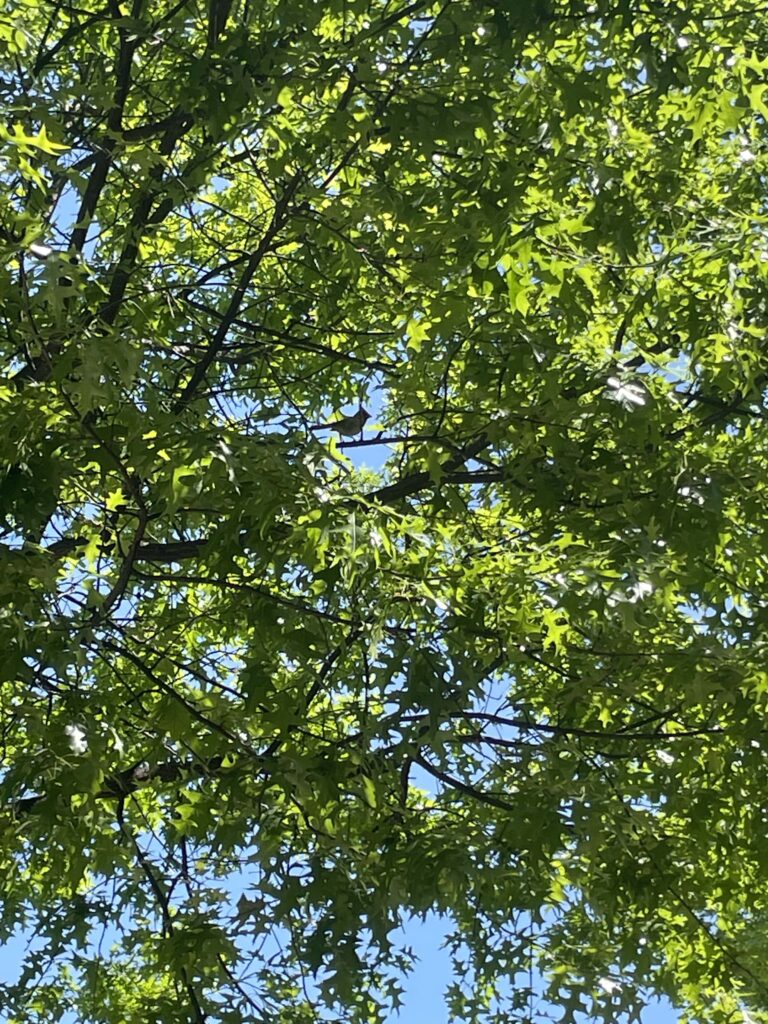
By Andrew Patterson, Angelica Jones, and Logan Cyterski
Introduction:
Everybody feels that nature is beautiful, and, recently, Georgia Tech has made a significant effort to reintroduce trees and, with them, birds, into the environment. However, the high volume of man-made structures in the area poses a significant threat to the new bird population. Windows that allow light to pass through completely unperturbed are almost impossible for birds to detect, so they will often fly right into them and die; they are completely unequipped to deal with an invisible barrier that they don’t know exists.
However, windows can be designed to be more bird-safe. The Kendeda Building on campus has windows with a dot pattern etched into them that allows birds to recognize the glass as a physical barrier and still let humans use it as a window at the same time. Windows made with normal glass can also be retroactively made to be bird-safe, too. If you’re going for a quick and easy solution, you could just dirty your windows with bar soap or whitewash. If you don’t want to dirty your windows, or want something more permanent, you could cover the exterior of your window with a screen or with netting.
Our project seeks to raise awareness for this issue by creating a dramatic environmental display that will allow users to actively measure the bird-safety of windows on campus, and around the world.
Hardware Components
- Arduino
- Arduino Breadboard
- LCD Screen
- LED Lightbulbs
- Button
- GUVA s12SD UV Light Sensor
- Potentiometer
- Resistors
- Stepper Motor
Initial Design
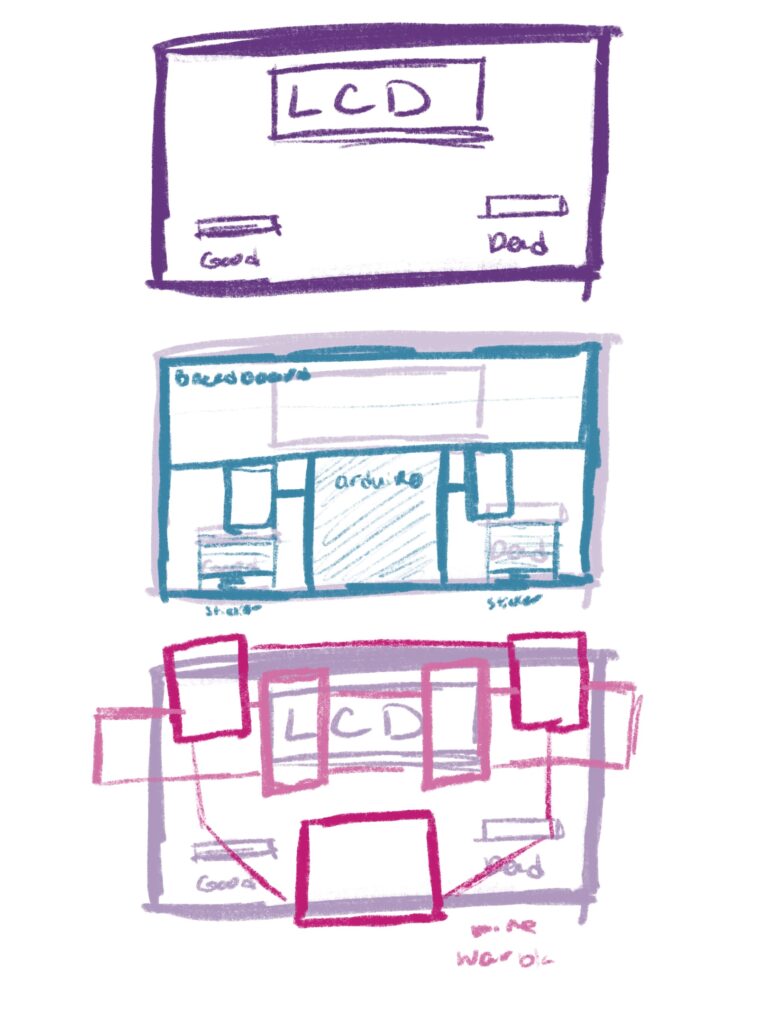
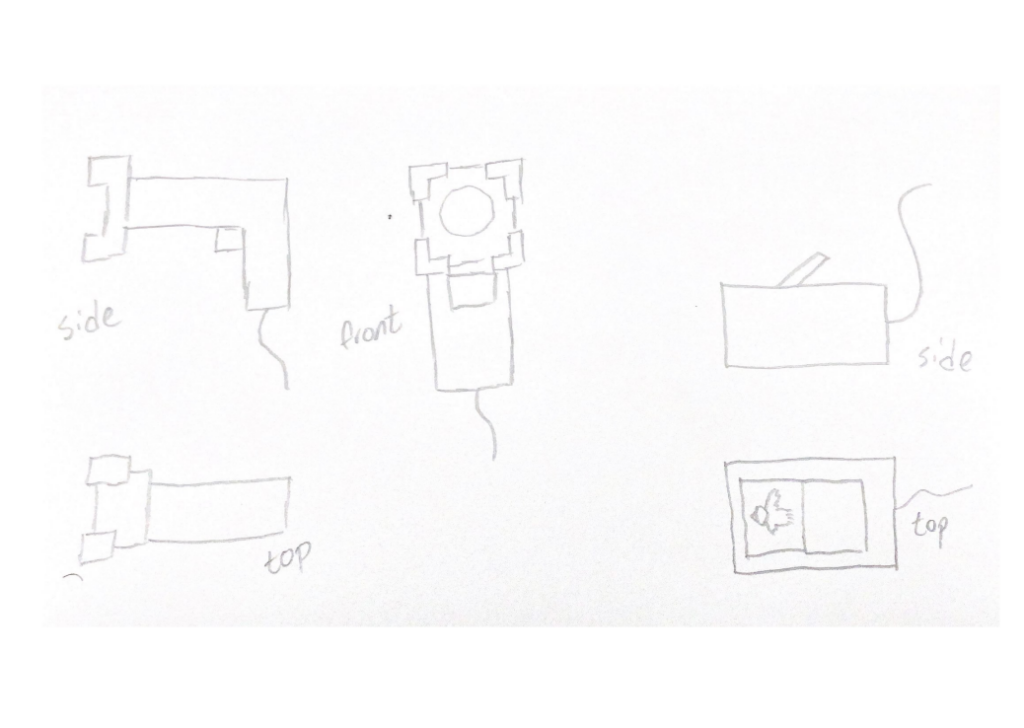
Developing our Product
First, we had to test the sensors we received to make sure they were working, along with making sure that we could understand and utilize the analog output and use it to make conclusions about the bird-safety-factor of a window.
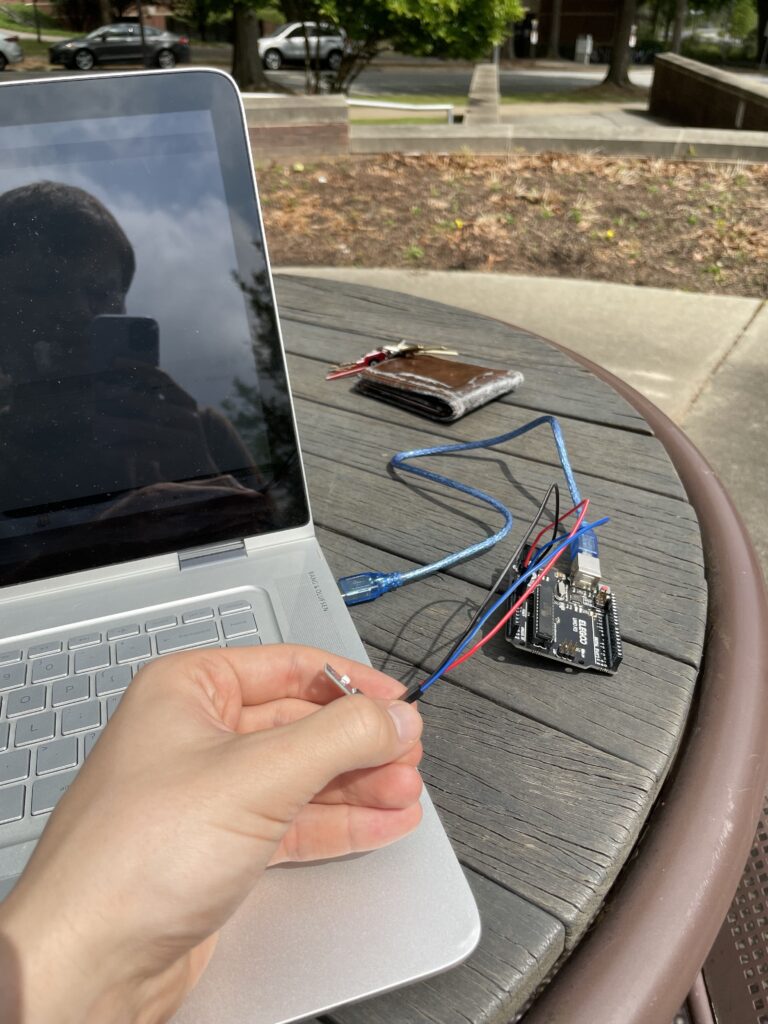

With our input semi-realized, we shifted focus to our battery pack, our device casing, and our outputs.
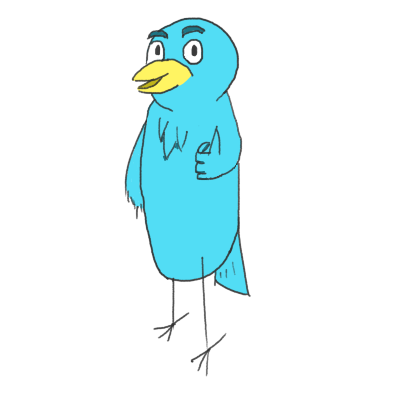
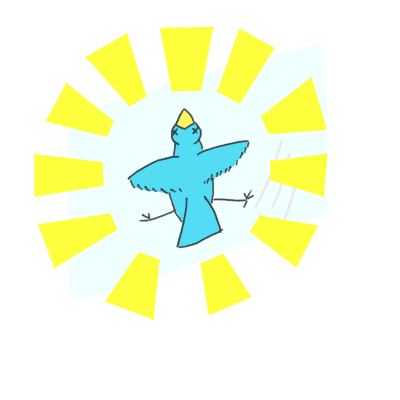
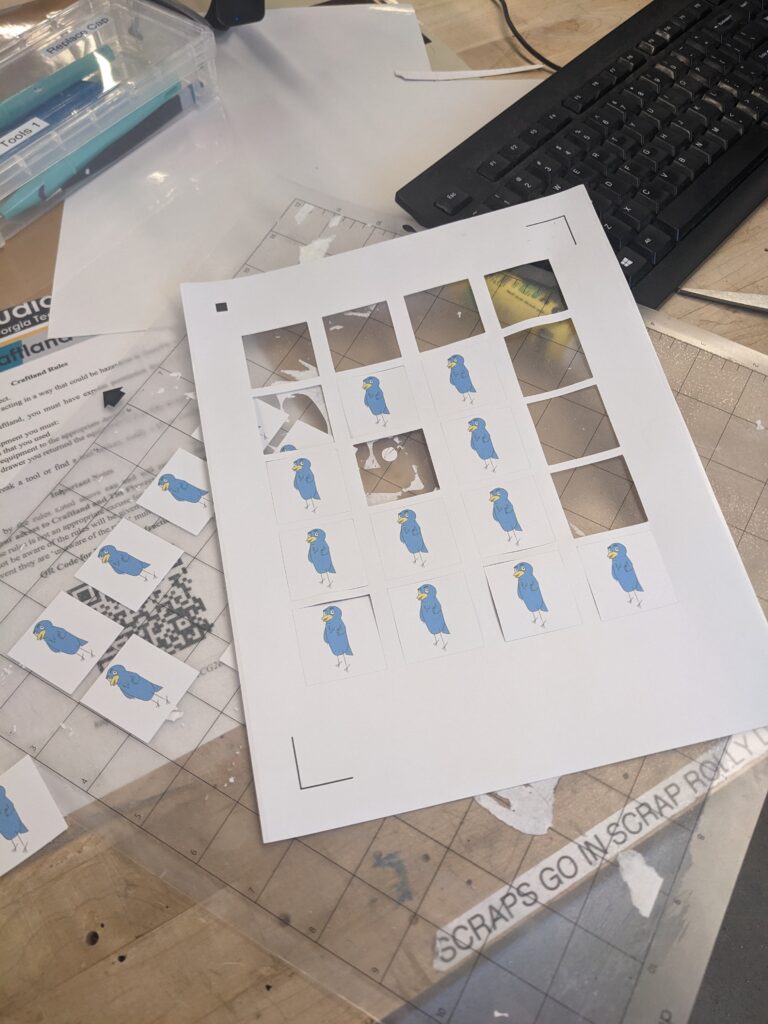
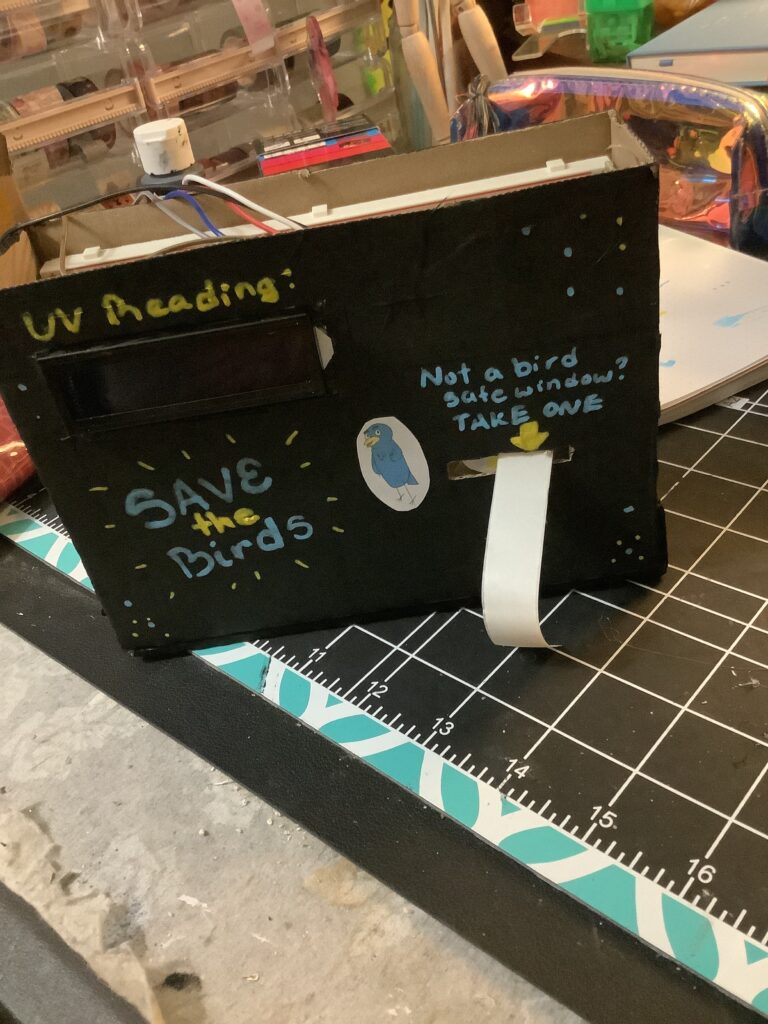
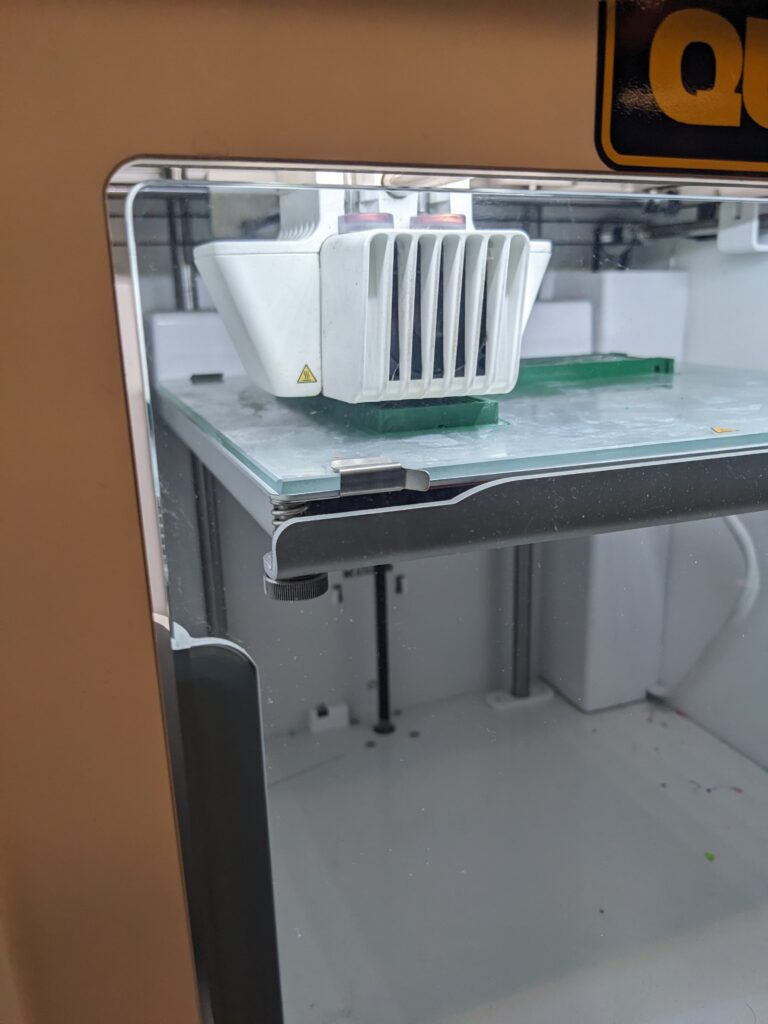
Schematic:
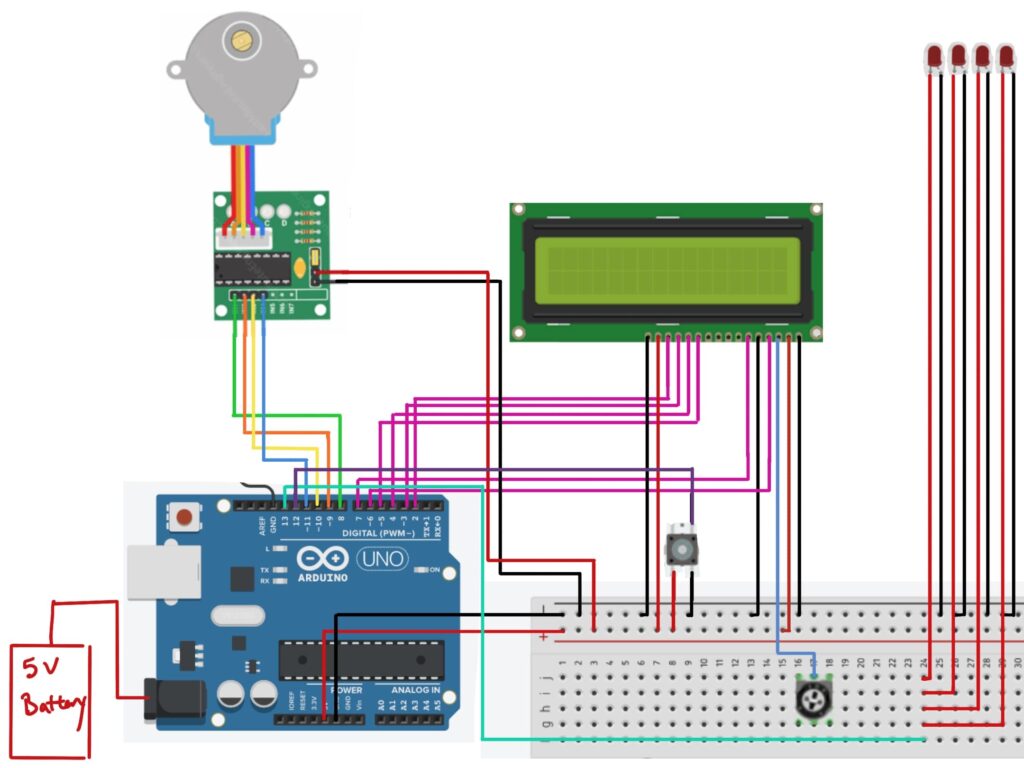
Code:
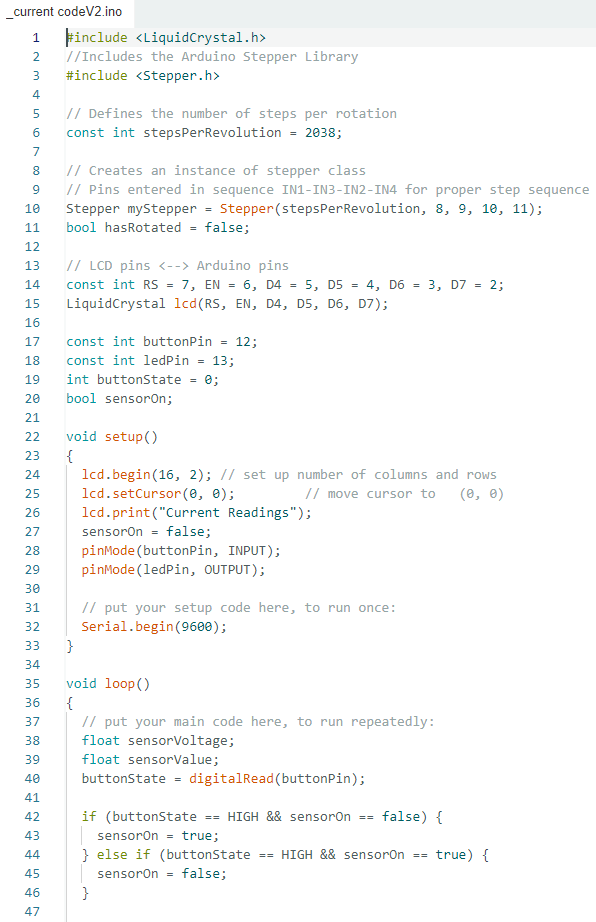
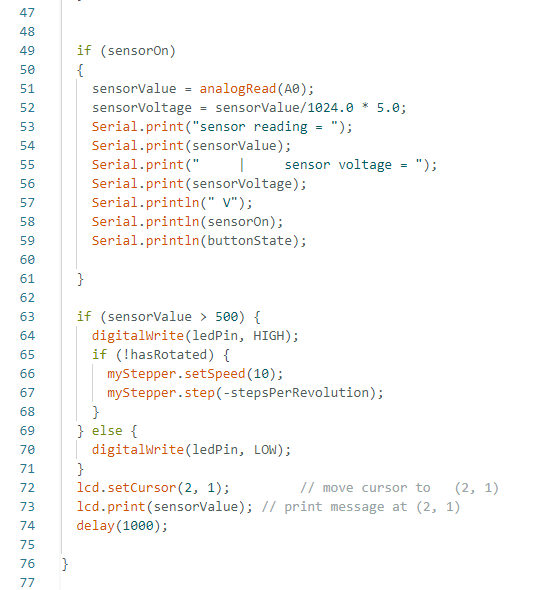
Video:
https://drive.google.com/file/d/1u8P0FI47Aq_U6wLUMHvSfRq_eDL1jigo/view?usp=sharing
Resources Used:
https://qbios.gatech.edu/wildlife-home-campus
https://drive.google.com/file/d/1Yr3NWyeLREu80cvuM-yImYFzuPClbP8X/view?usp=sharing
Leave a Reply